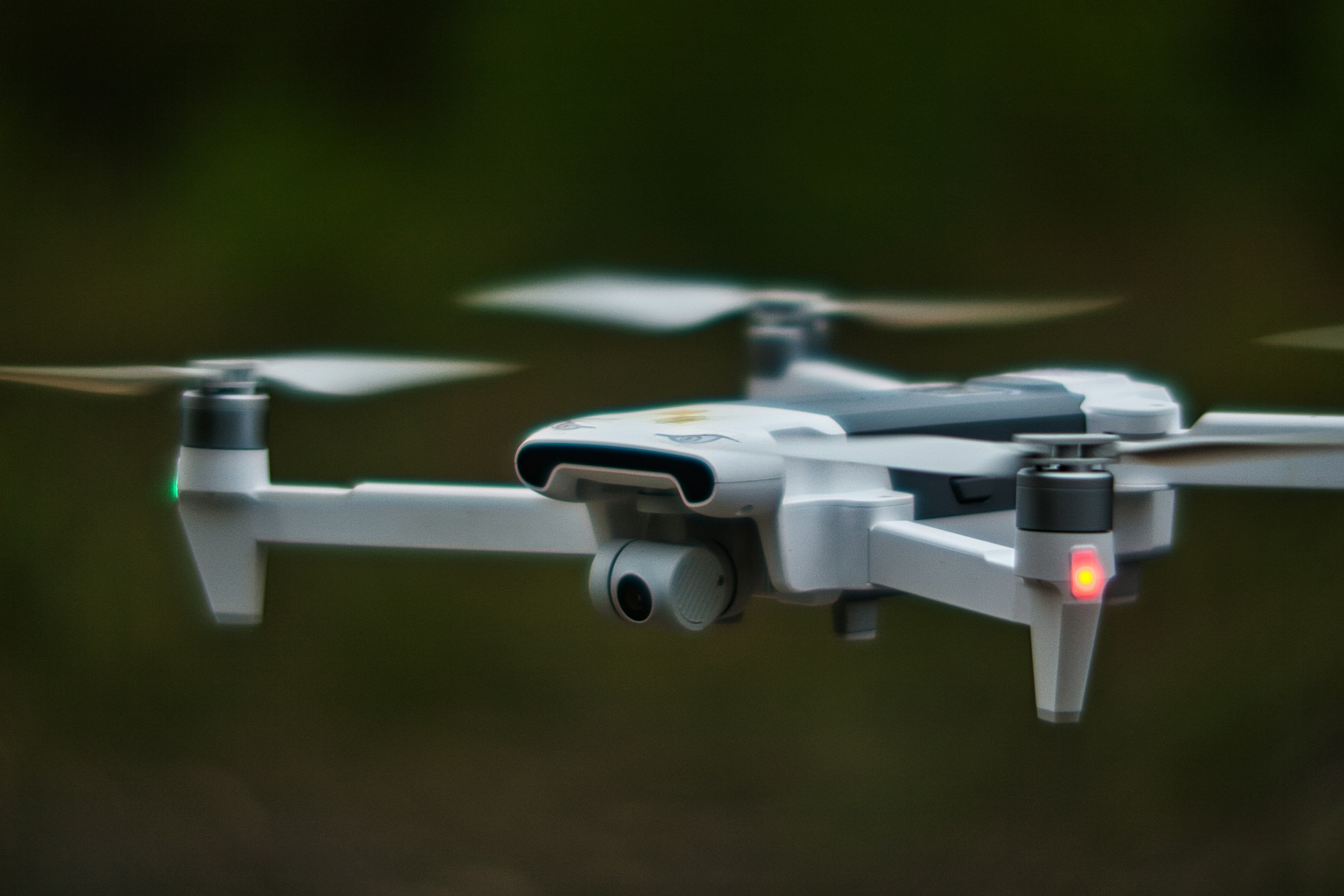
Why UAV (Drone) Careers in the UK Are Becoming More Multidisciplinary
Unmanned Aerial Vehicles (UAVs), commonly known as drones, have seen rapid adoption across sectors in the UK — agriculture, logistics, inspection, mapping, delivery, search & rescue, environmental monitoring, media, defence, and more. As UAV use proliferates, the roles supporting them are shifting.
Modern UAV careers are no longer just about aerodynamics, electronics or autopilot algorithms. They now require knowledge of law, ethics, psychology, linguistics & design — because flying machines in public airspace must be safe, trusted, legal, intuitive and well communicated.
In this article, we’ll explore why UAV careers in the UK are becoming more multidisciplinary, how those allied fields intersect with UAV work, and what job-seekers & employers should do to adapt.
Why UAV careers are evolving to be multidisciplinary
1) Regulation & airspace governance
Drones operate in regulated airspace, near people, infrastructure and public property. Regulation, licensing, safety rules, privacy laws, data permissions and air traffic integration all demand legal awareness.
2) Ethical scrutiny & public acceptability
Drones are perceived as intrusive or risky (privacy, safety, noise). Ethical design, transparency, fairness, public engagement and accountability are essential for acceptance.
3) Human behaviour & operator interaction
Many UAVs are semi-autonomous, require human override, or interact with humans on ground or remote. Psychology informs how operators trust, respond, misinterpret or misuse UAV controls.
4) Communication & language in contexts
UAVs issue alerts, notifications, voice cues, status messages, or interface warnings. Linguistic clarity matters both for pilot control and for public communication.
5) Design for usability, safety & accessibility
Drone control software, ground stations, interface design, feedback displays, warning cues — design ensures safe, intuitive interaction that reduces error.
How UAV work intersects with supporting disciplines
UAV + Law: airspace, privacy & liability
Why it matters Flight in UK airspace comes with civil aviation regulations (e.g. CAA regulation, UAS regulations), privacy law, data protection, liability for damage, no-fly zones, insurance, import/export of drone hardware.
What the work looks like
Submitting applications for drone operation authorisations (e.g. permission for commercial operation, beyond visual line of sight).
Ensuring privacy & data law compliance when recording imagery, LiDAR or video over private spaces.
Defining liability relationships: operator vs manufacturer vs software vendor.
Licensing, insurance, safety documentation.
Advising on import & export controls for UAV hardware or restricted sensors.
Skills to cultivate Civil aviation regulation, privacy/data protection law, liability & tort law, insurance frameworks, technical understanding of UAV systems.
Roles you’ll see UAV compliance officer; aviation legal counsel for drones; licensing & regulation specialist; drone data protection officer.
UAV + Ethics: trust, safety & public good
Why it matters Drones can be intrusive, surveilling, noisy, or misused. Ethical design ensures transparency, accountability, safe failure, fair use and mitigation of harms.
What the work looks like
Ethical risk reviews for UAV use cases (surveillance, public monitoring, delivery).
Defining transparency & auditable logs for flights & data capture.
Embedding fair use, bias avoidance in detection or tracking algorithms.
Red teaming drone systems, failure modes, misuse scenarios.
Defining public engagement strategies and stakeholder communication for drone deployment.
Skills to cultivate Applied ethics, risk assessment, public engagement, dual-use technology understanding, stakeholder mapping.
Roles you’ll see Drone ethics officer; responsible UAV systems designer; governance & oversight lead; public acceptance & engagement specialist.
UAV + Psychology: operator & human–drone interaction
Why it matters Even autonomous UAVs may require human oversight. Operators interact with complex interfaces, alerts and degraded environments. Psychology helps us design for trust, workload, attention, error recovery.
What the work looks like
Studying cognitive load on drone pilots.
Designing alert systems to avoid overload or habituation.
Evaluating trust calibration: when to intervene vs let autonomy act.
Investigating human reaction to drone behaviour, collisions or anomalies.
Analysing misinterpretation of drone feedback (warnings, status displays).
Skills to cultivate Cognitive psychology, HCI, human factors, experimental design, scenario testing in aviation contexts.
Roles you’ll see UAV human factors engineer; operator UX researcher; trust calibration designer; behaviour analyst in UAV systems.
UAV + Linguistics: clarity in commands & messaging
Why it matters Pilots, ground operators and public all interpret UAV messages, alerts or communications. Linguistic clarity helps avoid misunderstandings, misuse or public alarm.
What the work looks like
Crafting message language in UI, alerts, alarms or errors.
Supporting multilingual UAS interfaces (e.g. ground control, mission briefings).
Translating complex UAV jargon into understandable text for users, regulators, public.
Designing voice/command interpretation systems (voice control, natural language interfaces).
Standardising terminology across UAV systems for clarity.
Skills to cultivate Technical writing, semantics, pragmatics, multilingual communication, dialogue systems, plain language design.
Roles you’ll see Drone interface writer; communication & messaging specialist; multilingual UAV UI designer; voice command linguistic specialist.
UAV + Design: safe, intuitive interfaces & interactions
Why it matters Drone usability matters hugely. Control panels, ground station UIs, mission planners, feedback cues, flight planning tools, error state visualisations — all demand design to reduce missteps and help situational awareness.
What the work looks like
Prototyping ground control interfaces (maps, telemetry, controls).
Designing mission planning flows, permissions, geo-fencing interfaces.
Creating accessible UIs for operators of varying skill levels.
Visualising flight paths, alerts, sensor data in intuitive ways.
Designing feedback signals (light, audio, haptics) for safe interaction.
Skills to cultivate UX/UI design, information visualisation, prototyping, human–robot interaction, accessibility, aviation UI patterns.
Roles you’ll see Drone UX designer; mission planner interface designer; visualisation specialist for UAV telemetry; operator interface researcher.
Implications for UK UAV job-seekers
Hybrid skills are core differentiators: Pair drone engineering or autonomy with understanding of law, ethics, psychology, linguistics or design.
Make multi-domain prototypes: Build drone demos integrating interface, alerting, public transparency or compliance.
Understand UK UAV regulation: Get familiar with CAA, UAS regulations, permissions for commercial use.
Develop communication & usability strength: Many roles require explaining UAV systems to nontechnical stakeholders or the public.
Engage in validation & pilot projects: Fly in communities, user tests, open projects.
Implications for UK UAV employers
Hire cross-functional teams: Engineers, designers, ethicists, legal experts and human factors specialists.
Include nontechnical review early: Regulation, public perception, transparency and usability must inform design from concept.
Run safety & public acceptance trials: Don’t just test in lab.
Record decisions, logs & justification: Essential for audit, regulation & trust.
Train cross-disciplinary literacy: Help engineers learn ethics; help legal teams understand UAV technical constraints.
Paths into multidisciplinary UAV careers
Courses & certifications in UAV regulations, aviation law, human factors in avionics, UX for shape, communication design.
Cross-domain projects: Participate in drone challenge competitions bridging autonomy & UX, public engagement.
Open projects & community: Contribute to open UAV software that includes UI, telemetry, logging features.
Internships & field trials: Seek placements in companies or local authorities running drone services, especially in planning, public engagement or regulatory liaison teams.
Mentorship and teamwork: Partner with legal, design or human factors mentors to gain diverse exposure.
CV & cover letter guidance
Lead with hybrid capability: “UAV systems engineer with regulatory insight” or “Drone UX designer with autonomy experience.”
Use evidence & outcome: “Redesigned ground control UI that reduced operator error by 25% in test scenarios.”
Show regulation & ethical exposure: Mention knowledge of CAA permissions, privacy law or ethical audit frameworks.
Quantify usability / safety impact: lower incidents, better clarity, improved task success.
Tie to UK UAV context: mention drone pilot licensing, regulatory frameworks, public trials or pilot programmes.
Common pitfalls & how to avoid them
Focusing only on autonomy & sensors → Neglect public, legal, human contexts.
Assuming people will understand warnings → Design clarity is essential.
Ignoring regulation until late → Permissions & privacy must shape architecture early.
Overloading interface → Feedback must be usable in real environments.
Not planning failures or miscommunication → Always design fallback paths, transparency and logs.
The future of UAV careers in the UK
Hybrid roles will grow: “Drone compliance engineer”, “UAV UX & ethics lead”, “public engagement & regulation specialist for drones”.
Governance & oversight will expand: Independent ethical audits, public transparency reports, regulatory review becomes standard.
Operator trust & human factors will matter more: Psychology research into trust, decision automation, override design.
Communication & explanation roles expand: Writers, translators, narrative designers connecting drones to people.
Design for safety & acceptance leads: Drones that fly well but are also socially acceptable and understandable will win.
Self-check questions
Can you explain your UAV platform in plain language?
Do you know which UK aviation regulations apply to your work?
Have you prototyped a user interface or alert system?
Is your messaging, alerts & instructions clear & unambiguous?
Do you consider user trust, error recovery & failure modes in your designs?
If not, those are rich areas to deepen.
Conclusion
UAV careers in the UK are evolving from pure engineering roles into rich, multidisciplinary professions. Technical capability is necessary, but insufficient. To build trustworthy, usable, legal & socially accepted drone systems, professionals must combine skills in law, ethics, psychology, linguistics & design.
For job-seekers, that means building hybrid skills and showcasing cross-domain work. For employers, it means assembling multidisciplinary teams early, embedding oversight & usability into design, documenting decisions, and engaging with public trust.
The future of UAVs in the UK lies not just in better sensors or control, but in systems people trust, regulators permit, and operators can use safely and confidently. Those who bridge disciplines will shape that future — and secure the most meaningful, resilient careers in drone technology.


